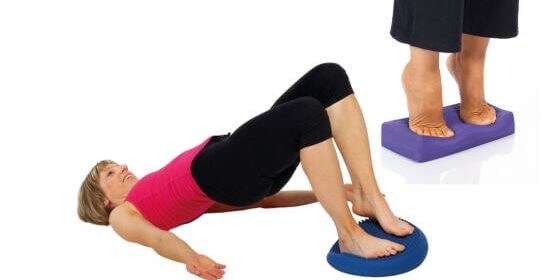The ankle joint is one of the most heavily loaded joints in the human body. It connects the lower end of the tibia and fibula to the upper end of the talus. The complex interaction of bones, ligaments and muscles allows for a variety of movements, including lifting, lowering, rotating and tilting the foot. A strong ankle joint is of great importance for the health and performance of the human body.
The functions of the ankle joint
The ankle joint has several important functions in the human body:
- Stability: A strong ankle joint provides stability and allows us to walk, run and jump on uneven terrain without losing our balance. It also helps maintain good posture.
- Absorption of shock loads: The ankle joint acts as a shock absorber, cushioning the loads that occur during walking or running. A weak ankle joint can lead to overuse and injury.
- Joint mobility: A healthy ankle joint allows optimal mobility of the foot. It allows dorsiflexion (lifting the foot), plantar flexion (lowering the foot), inversion (inward rotation of the foot) and eversion (outward rotation of the foot).
The upper ankle joint
The upper ankle joint, also known as the talocrural joint, connects the tibia and the talus. It is a hinge joint that is primarily responsible for the up and down movements of the foot. A strong upper ankle joint is critical for stability and mobility when walking, running, jumping and many other activities.
The lower ankle joint
The lower ankle joint consists of the connection between the ankle bone and the calcaneus. It allows inversion and eversion of the foot and is important for lateral movements and rotations. A strong lower ankle joint contributes to the stability of the foot and minimizes the risk of sprains and injuries.
Exercises for strengthening and stability of the ankle joint
To maintain or build a strong ankle, it is important to perform specific exercises for strengthening and stabilization. These exercises may include:
- Balance training: Stand on one leg and try to keep your balance. This promotes the stability of your ankle.
- Calf raise: Raise yourself up onto your toes and slowly lower yourself back down. This exercise strengthens your calf muscles and supports the function of your ankle.
- Theraband exercises: Use a theraband to provide resistance to various movements of your foot. This helps strengthen the ankle muscles.
- Proprioceptive training: Use unstable surfaces such as a balance plate or a cushion to improve the stability of your ankle.
The importance of a strong ankle joint for health and performance
A strong ankle is crucial for your health, mobility and performance. It allows you to perform your daily activities pain-free and without risk of injury. Through targeted training and regular exercise, you can promote stability and strength in your ankle, helping to improve your quality of life. Remember, if pain or injury persists, always see a doctor or physical therapist for an accurate diagnosis and appropriate treatment.
Our TOGU experts advise:
A simple and effective tip to promote ankle health is to incorporate regular balance exercises into your daily routine. Balance exercises aim to improve the balance and stability of your ankle by strengthening the surrounding muscles and training your proprioception, or body awareness.
There are a variety of balance exercises that you can easily do at home or in the gym. A simple example is single-leg standing. Start by standing on one leg and try to keep your balance. Hold this position for about 30 seconds and then switch to the other leg. Repeat this exercise several times on each side.
Another exercise is to balance on an unstable surface, such as a balance plate or cushion. Stand on the unstable surface and try to keep your balance. You can vary this exercise by adding additional movements, such as swinging your arms or rotating your upper body, to increase the challenge.
In addition to these exercises, you can also benefit from everyday activities to strengthen your ankle. For example, take the opportunity to stand on one leg while brushing your teeth or waiting in line to train your balance. By regularly incorporating balance exercises into your routine, you’ll help improve the stability and strength of your ankle.
A strong ankle reduces the risk of injury, improves range of motion and allows you to perform your athletic activities and everyday activities with more ease. So, be active on one leg and strengthen your ankle for a healthy and active life!

